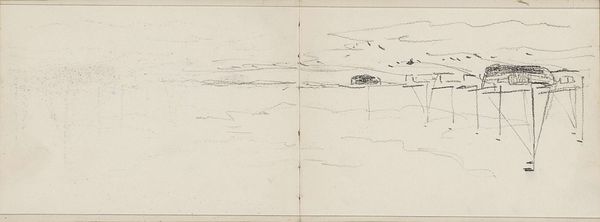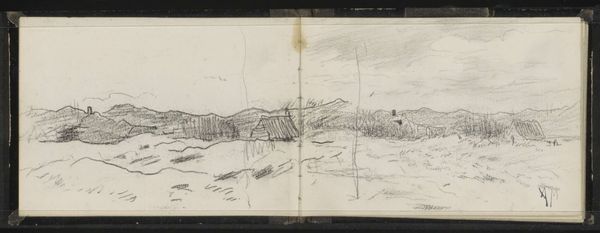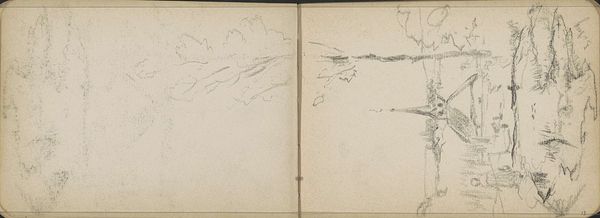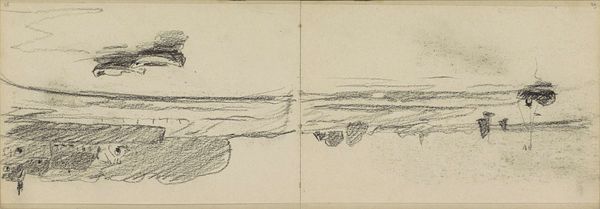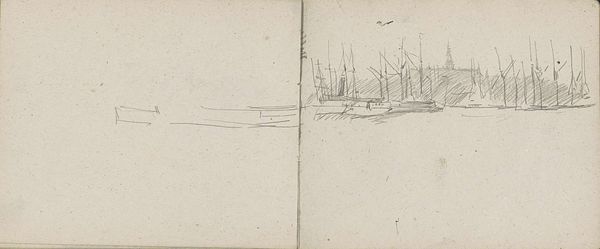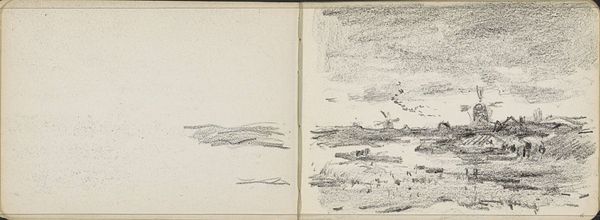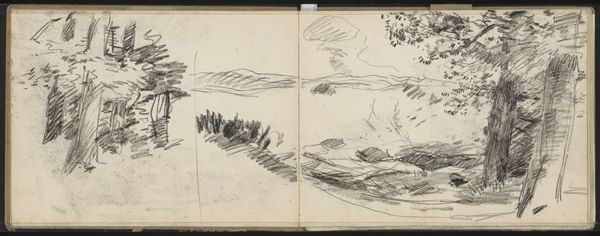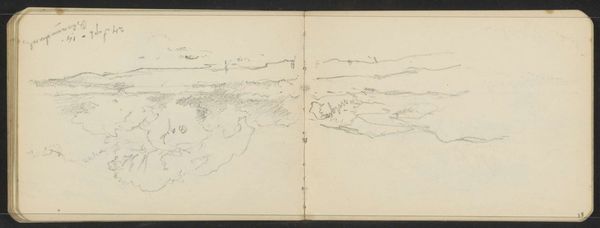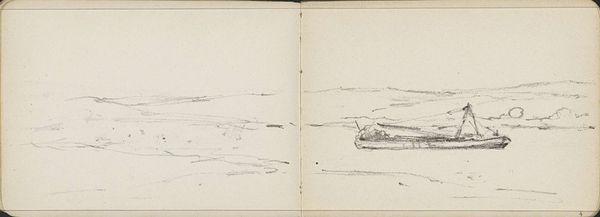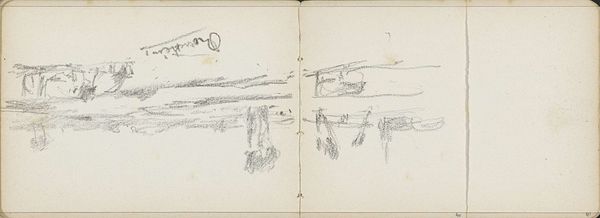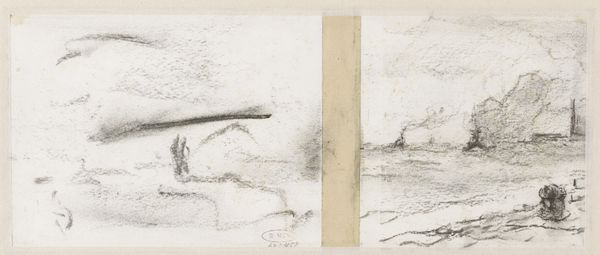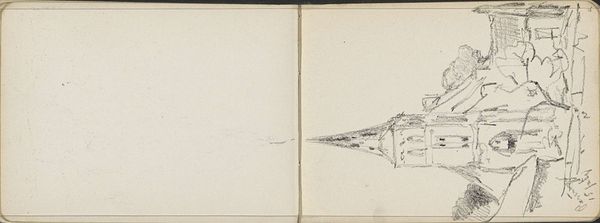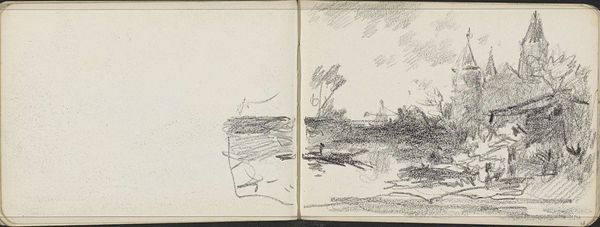
Landschap met molens en een landschap met een rij bomen en een huis 1848 - 1888
0:00
0:00
drawing, pencil
#
drawing
#
impressionism
#
pen sketch
#
sketch book
#
landscape
#
personal sketchbook
#
idea generation sketch
#
sketchwork
#
pen-ink sketch
#
pencil
#
pen work
#
sketchbook drawing
#
storyboard and sketchbook work
#
sketchbook art
#
realism
Copyright: Rijks Museum: Open Domain
Editor: This is a sketch by Anton Mauve, titled 'Landschap met molens en een landschap met een rij bomen en een huis', created sometime between 1848 and 1888. It's a pencil drawing with two landscape studies on opposing pages of a sketchbook. It strikes me as very immediate and personal. What do you see in this piece? Curator: I see a dance between observation and memory. The loose, suggestive lines speak to a rapidly recorded impression, a fleeting moment anchored by recognizable forms like windmills and trees. Notice how the sketch quality creates a dream-like atmosphere. These aren't just windmills; they're *symbols* of Dutch identity, heritage, and the harnessing of nature's power. What feelings are evoked through that symbolism? Editor: It makes me think about the passage of time, the traditional rural life slowly changing, and Mauve's way of capturing those last glimpses of the old ways of life. But the sketches are quick, not really finished, suggesting just a fragment of time, as it floats away like smoke. Curator: Precisely! The incompleteness is potent. Consider how landscape, particularly within Dutch art, often serves as a mirror to the soul of a people. These sketches might represent not only the physical landscape, but also the internal landscape of a nation grappling with modernization. Are there psychological or spiritual components that these landmarks trigger, and does their rendering serve to represent collective identity and place in an active dialogue? Editor: I hadn’t thought about the national identity aspect, but the windmills do definitely suggest that in a broader context. It's interesting to consider these not just as sketches but as cultural symbols. Curator: Indeed. Recognizing the cultural weight imbues them with resonance, even in their fragmentary state. The act of sketching transforms the image of the mundane to an investigation of memory, identity, and the ever-shifting perception of landscape. Editor: Thanks! I am not only appreciating the drawings as a glimpse into the artist's process but also now the bigger picture they might suggest!
Comments
No comments
Be the first to comment and join the conversation on the ultimate creative platform.
